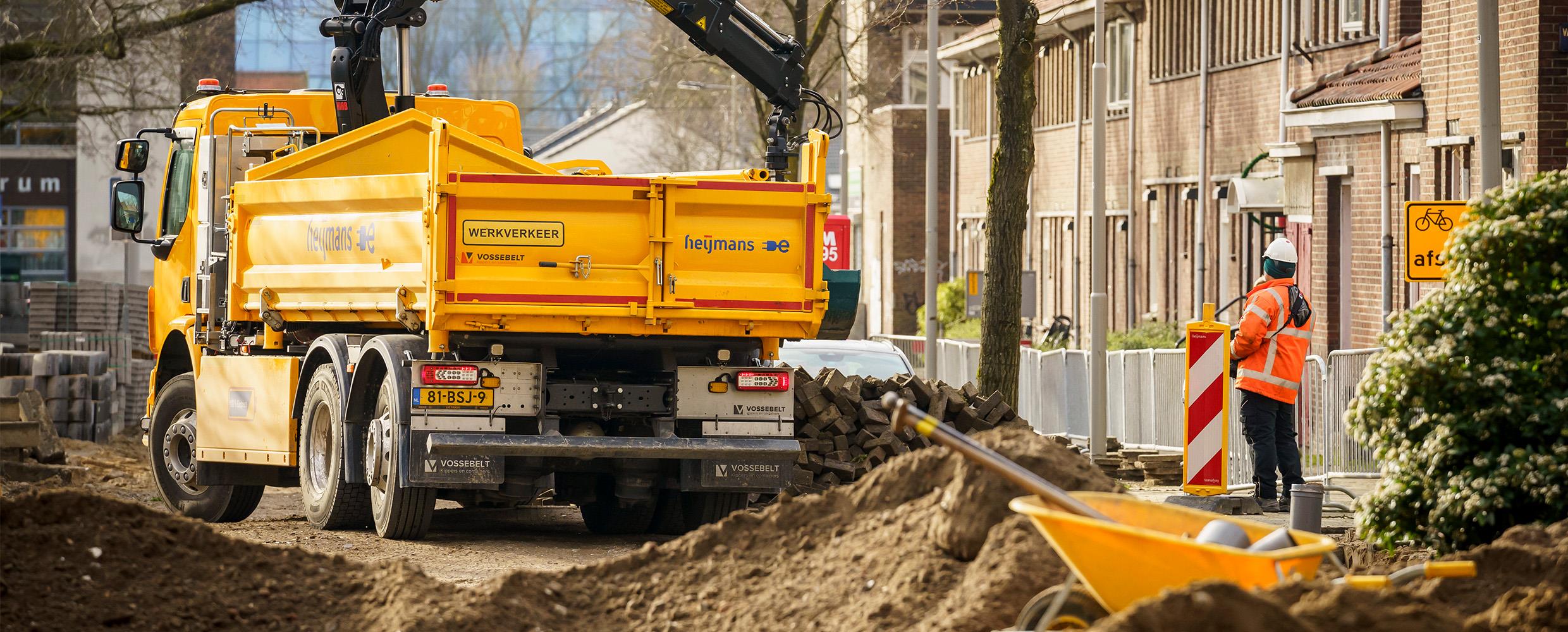All projects are predictable and contribute to our profit
Heijmans has improved its own risk awareness and risk management significantly in recent years and it is now an integral part of the organisation and its way of working. The result of these efforts is now visible and attitudes to risks have changed. Of course risks are part of our work, but we only accept those risks that we can control, influence, mitigate or bear. In the past year, we were faced with far-reaching external developments. Covid-19 - the effects of which are still being felt - was followed by the war in Ukraine and the energy crisis. We are faced with the scarcity of people and materials, and problems with affordability and regulation, while the nitrogen emissions issue also remains a concern in our sector. These developments have created major uncertainties in many areas. If Heijmans wants to continue to grow profitably in the coming years, we as an organisation must dare to take certain manageable risks. It helps that we have improved and standardised our assessment of risks.
In all sectors, we are careful about accepting large and/or complex projects and entering into cooperation with risk-bearing partners. We assess the culture, competences and solidity of our potential partners and are reluctant to take on too many large projects. Larger projects are only acceptable with the right partners and an appropriate contract form with corresponding risk allocation. We only want to bear risks that we can control and influence, and only accept projects that are profitable. This meant that last year, too, we continued to focus fully on the relationship between risk acceptance and earning potential. We remain committed to margin over volume and we can see that thanks to this approach, we have maintained the high quality of our order book even as it continues to grow. Almost 30% of our revenue is now recurring and not project based. This increases predictability, helps lower our risk profile and makes a significant contribution to the company's stability. It enables us to absorb the impact of external developments in the shorter term, while looking further ahead to the future.
Process improvement
At Heijmans, we devote a lot of attention to quality and quality assurance. Our processes are not just about how we organise our work, but also about quality control. Internal product quality assurance provides insight into what is going well and where things can be improved. So we can make good products to a high standard, and we make an effective translation of clients’ demands into offers.
This makes it important to properly introduce new colleagues to the Heijmans way of working. Our onboarding of new employees is now more careful than it was previously, and it is not just people’s immediate supervisor who plays a role in this. Others, such as the quality department, are also watching. The attention we devote to ‘This is how we work’ is not just for new employees. Teams that work for a long time on a single major project with other partners and then return to the Heijmans organisation are given a kick-start if we feel this is necessary to bring them up to speed again on all our standards, tools and processes that have improved in the meantime. Employees appreciate this and it contributes to the quality of work and the products they deliver.
However, established processes can also be perceived as ballast, as they are sometimes cumbersome or inefficient. This is why we are continuing to work on increasing process maturity. This is leading to the streamlining, simplification and unbundling of an increasing number of mandatory processes, as well as to the avoidance of unnecessary processes and procedures. In this way, employees can see that they are truly supported by these processes and that this enables them to do their work better and more easily.
User-friendly tools
Last year, Heijmans also took steps on the IT front, to ‘de-clutter’ tools and systems and tailor them more effectively to the needs of employees and clients. User-friendliness is essential on this front, also in view of the tight labour market. Employees enjoy their work more when they have good tools at their disposal. Our clients can also see this, and it contributes to the image they have of Heijmans.
Another improvement was related to the tools used by our service employees and project managers. Non-experts regularly have to use the expert systems within Heijmans, so we produced user-friendly and more efficient apps for this target group using low-code software. In 2022, employees gave IT services within Heijmans a score of 7.9.
Reliable and safe technology and systems
As digitalisation and data are playing an increasingly important role in our business, reliable and secure technology and systems are essential. This obviously goes for our own business operations, but it is just as important when it is a part of our products, services and projects for our clients and customers. Cyber attacks are a serious threat to organisations worldwide, including Heijmans. We take the risks of phishing, ransomware and other types of attacks very seriously. On the basis of our ‘Secure@Heijmans’ cybersecurity roadmap, we continuously work on integrating cybersecurity into our business operations, products, services and projects. Awareness and knowledge of our own actions and responsibilities are just as important as state-of-the-art security systems. In the past year, we took additional steps to further increase our cybersecurity resilience.
One of the activities we organised was a hackathon for colleagues who deal with cybersecurity, both as part of their job and based on their own interests. The aim was to share knowledge about cybersecurity in an interactive way. By building a community of cybersecurity advisers, ambassadors and other interested parties within the organisation, we make sure that this topic becomes and stays front of mind among a wider audience.
